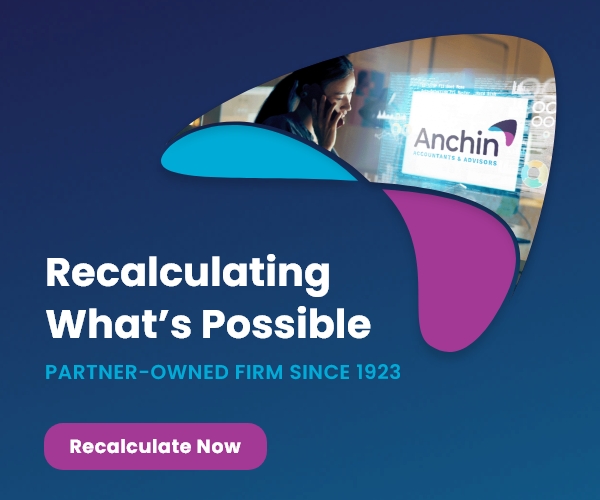In the relentless tide of today’s fast-paced, data-driven corporate world, Financial Planning and Analysis (FP&A) has undergone a profound transformation. No longer is it confined to the traditional role of simply crunching numbers and maintaining the fiscal books. Instead, it has evolved into a dynamic blend of data analytics and strategic storytelling – a powerful combination that shapes the direction of modern organizations. The numbers may not give you the integral story, but they will aid you in appreciating the financial dynamics. Finance professionals today must wield data like a sculptor molds clay, crafting compelling narratives that not only present numbers but breathe life into them, driving informed decision-making and charting the course of future growth.
The Transformation of FP&A: A Strategic Evolution
Historically, FP&A teams operated in a support capacity focused mainly on budgeting, variance analysis, and financial reporting. Today, however, they play a much more strategic role, actively partnering with leadership teams to provide actionable insights that can influence the company’s direction. The dynamic nature of modern business requires FP&A professionals to not only look at past performance but also forecast future trends, identify risks, and uncover opportunities, all through the lens of data-driven insights.
CFOs are always at the center of challenging and seemingly complex issues in a highly influence based environment. The commercial focus and involvement at tactical and strategic levels, make it interesting and rewarding. Over the past 20-25 years, I have seen firsthand how FP&A teams have transitioned from being “number custodians” to “strategic partners.” The key to this transformation lies in data. No longer is it enough to provide raw numbers; we must now prioritize data analysis and convert that data into meaningful insights that support decision-making across all levels of the organization.
For example, in one of my previous roles, our company faced a significant challenge: a rapid change in the competitive landscape that threatened to erode our market share. Traditionally, we would have relied on historical data to assess performance and guide future strategies. But this time, we took a different approach. We harnessed real-time data to analyze shifts in consumer preferences, competitor moves, and broader market trends. Through deep analysis and scenario planning, our FP&A team constructed a straightforward narrative of where the market was headed, ultimately influencing the decision to pivot our product development efforts toward a new growth opportunity.
The Power of Persuasion: Mastering Data-Driven Storytelling
What sets today’s FP&A professionals apart is their ability to transform complex financial data into a story—one that captivates and resonates with stakeholders at every level. This shift from merely reporting numbers to crafting data-driven narratives represents a fundamental change in how financial leaders communicate value.
At its core, data-driven storytelling is the art of presenting financial information in a way that is not only accurate and detailed but also compelling. It involves interpreting data and distilling it into a cohesive story that connects with the audience, whether they be board members, executives, or external stakeholders. While the numbers are essential, the story is what leaves a lasting impact, driving action and change.
Take, for instance, a situation I encountered during a board meeting. We were facing declining sales in one of our key markets across APAC. Rather than merely presenting the numbers in a straightforward report—declining sales, shrinking margins—I chose to frame the discussion in terms of shifting market dynamics. I explained how consumer preferences were evolving rapidly, partly due to increased competition from emerging players. Armed with data, I highlighted both the challenge and the opportunity: if we shifted our product offerings to better align with customer demand, we could reclaim lost ground and potentially open new revenue streams. By weaving these insights into a narrative supported by solid data, we successfully gained approval for a new initiative, which ultimately reversed the trend and revitalized sales in that market.
Bringing Data to Life: Practical Examples of Data-Driven Storytelling
I have seen time and again the power of turning raw numbers into a compelling narrative. Here are a few practical scenarios where data-driven storytelling has significantly influenced business decisions:
- Scenario Planning and Strategic Decision-Making: Imagine you’re guiding a company through the pivotal decision to expand into a new market. Instead of simply presenting a spreadsheet filled with financial forecasts, consider creating a comprehensive narrative that outlines the broader market dynamics, competitive pressures, and potential risks. Use data to paint a vivid picture of the market’s future trajectory, allowing decision-makers to envision the potential outcomes of various courses of action. In one instance, my team created multiple market-entry scenarios for a region in Southeast Asia. Financial models supported each scenario, but the real impact came when we integrated the data into a story. We highlighted potential hurdles, such as local regulations, alongside opportunities for rapid growth. This nuanced narrative helped the leadership team make an informed, strategic decision to pursue the expansion with confidence.
- Budgeting and Forecasting as Strategic Tools: Budgeting and forecasting are traditionally viewed as operational tasks, but when approached through the lens of storytelling, they can become powerful strategic tools. Rather than merely presenting departmental budgets, consider framing each budget within the context of the company’s long-term goals. For example, when I worked on the budget for a rapidly growing technology company, we reframed the discussion around how each department’s budget contributed to the company’s overall vision of becoming the market leader in AI-driven solutions. By showing how each investment aligned with that long-term goal, we engaged the leadership team on a much deeper level and secured approval for higher capital expenditures in areas that would fuel future growth.
- Performance Reporting with Impact: Performance reporting often involves overwhelming stakeholders with pages of financial data, but the goal should be to distil the essence of that data into an engaging story. During one quarterly review, I faced the challenge of presenting extensive financial metrics on a new marketing initiative. Instead of presenting dry figures, I crafted a story that showed the direct correlation between increased marketing spend and a surge in customer acquisition. By focusing on the “cause and effect” of the numbers, I was able to clearly communicate the initiative’s success and secure further investment from the executive team.
Mastering the Craft: Essential Skills for Data-Driven Storytelling
To excel at data-driven storytelling, FP&A professionals must develop a unique blend of analytical and communication skills. This involves much more than simply being proficient with spreadsheets and financial models. The true art lies in interpreting complex datasets, uncovering the insights that matter most, and crafting those insights into narratives that resonate deeply with their intended audience.
Visualization skills are equally critical. The ability to transform raw data into compelling visual representations—whether through dynamic charts, graphs, or dashboards—can elevate a narrative from mundane to impactful. A well-crafted visual can convey trends and insights far more effectively than rows of numbers, and this has been a game-changer in my experience. For example, during an annual strategy meeting, I utilized a heat map to highlight regions where the company had the most significant revenue potential. This visual representation sparked immediate discussion and helped prioritize our market expansion efforts.
However, the most crucial skill is empathy. Understanding the audience’s perspective—whether it’s a C-suite executive, a departmental manager, or a board member—enables FP&A professionals to tailor their storytelling to meet the specific concerns, priorities, and motivations of each stakeholder. When communicating with a marketing leader, for example, the focus might be on how financial data supports growth strategies, whereas when addressing the board, the story may center around long-term economic sustainability and risk mitigation.
From a CFO perspective, he/she marks as a catalyst who is responsible for galvanizing technological transformation across their company and must enthusiastically seize opportunities to get their hands dirty in driving technology transformation for FP&A. The CFOs need to be sensitive to what these technologies can do along with making strategic investment decisions related to them. They need to be supremely harmonized to the digital landscape and have an understanding to pilot efforts to revamp the business and recuperate productivity.
In conclusion, the evolution of FP&A into a strategic, data-driven storytelling function is a profound shift that underscores the importance of combining analytical rigor with the art of persuasion. By mastering this craft, finance professionals can transform the way they influence decision-making, ultimately driving growth, innovation, and lasting success within their organizations.
About Cube Highways
[NSE/BSE: CUBEINVIT] India’s largest highways platform, Cube Highways, is focused on investing, owning, and operating various infrastructure projects. It is a multi-billion dollar corporation and owns and manages 32 companies and 8,400+ lane kms across 14 States in India, with 100% assets rated AA category and above.
Headquartered in Singapore, Cube is backed by a marquee group of international investors viz. I Squared Capital, Abu Dhabi Investment Authority, International Finance Corporation (World Bank Group), British Columbia Investment, Abu Dhabi’s Mubadala, and a consortium of Japanese investors (including Mitsubishi Corporation, Japan Overseas Infrastructure Investment Corporation, etc.)






















